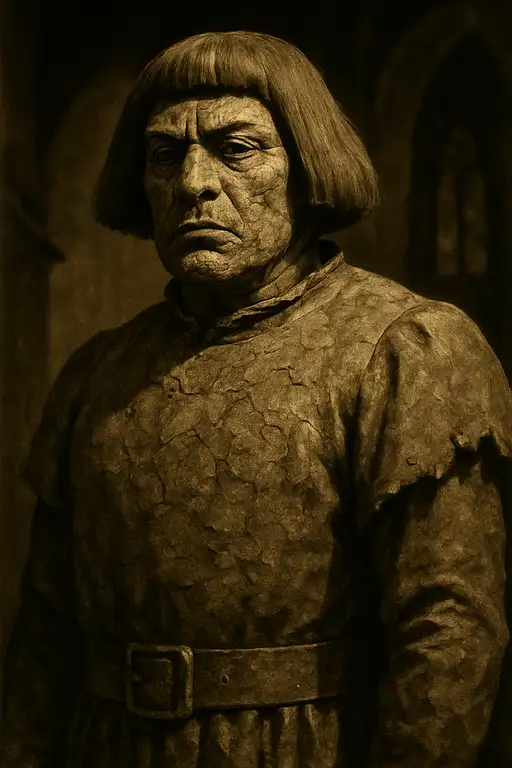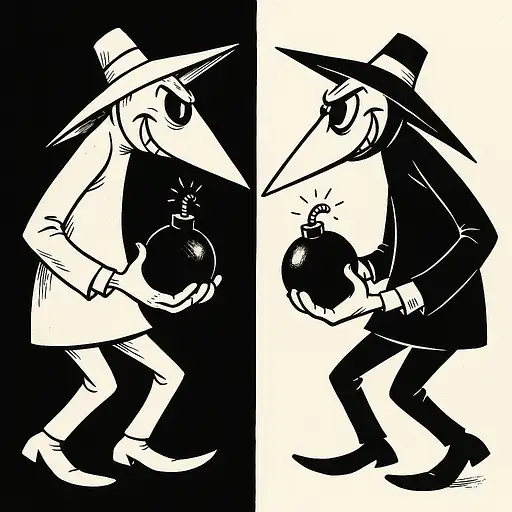


2 months ago
Create a highly detailed illustration of Debbie Harry, the iconic lead singer of the band Blondie, performing live in concert during the year 1980. Capture the vibrant energy and charisma of Debbie Harry as she commands the stage with her powerful presence. The scene should be rich in detail, showcasing her distinctive style and the dynamic atmosphere of the concert. Debbie Harry should be depicted in her signature look from that era, with her striking blonde hair, bold makeup, and fashionable outfit that reflects the late 70s and early 80s punk and new wave fashion trends. The stage should be alive with bright, colorful lights and a crowd of enthusiastic fans in the background, adding to the electric ambiance of the performance. Include elements such as musical instruments, stage props, and the band members to enhance the authenticity of the concert setting. The illustration should evoke a sense of nostalgia and excitement, capturing the essence of a live Blondie performance in the 1980s.

2 months ago
Create a digital illustration of the Golem as portrayed by Paul Wegener, capturing the iconic character from the 1920 film directed by Paul Wegener himself. The illustration should embody the aesthetic of 1920s cinema, characterized by its dramatic lighting, high contrast, and expressive, somewhat exaggerated features. The image must be in a 9:16 portrait format. Key elements to include: Character Design: The Golem should be depicted with a robust and imposing stature, reflecting the character's mythical and powerful nature. Emphasize the rough, clay-like texture of the Golem's skin, highlighting cracks and an earthy tone. Facial Expression: Capture the intense and somewhat sorrowful expression of the Golem, with deep-set eyes and a stern, contemplative look that conveys a sense of inner turmoil and humanity. Lighting and Shadows: Use chiaroscuro lighting to create a dramatic effect, with strong contrasts between light and dark areas. This will enhance the three-dimensional appearance and add depth to the character. Background: Incorporate elements reminiscent of early 20th-century film sets, such as gothic architecture or a dimly lit, mysterious environment that complements the eerie and timeless nature of the Golem. Costume and Details: Dress the Golem in period-appropriate attire, possibly tattered or ancient-looking robes, to further emphasize the historical context and the character's otherworldly origin. Color Palette: Utilize a sepia or monochromatic color scheme with subtle hints of color to evoke the look of early colorized films. This will help maintain the vintage feel of the 1920s cinema. Composition: Ensure the composition draws the viewer's eye to the Golem's face and upper body, making it the focal point of the image. Use the vertical format to emphasize the height and grandeur of the character. The overall aim is to create a visually striking and evocative portrait that pays homage to the classic film while incorporating the distinctive style of 1920s cinematography.

3 months ago
[Image Type: High-resolution black and white photograph / Realistic grayscale digital portrait / Detailed oil painting] of Lord Kelvin (William Thomson). General Appearance: Age: Depicted in his older years, appearing as an elderly man (likely 70s-80s), with distinct signs of age. Expression: Calm, dignified, and sagacious. His gaze is direct and piercing, conveying deep intellect and wisdom. There's a subtle seriousness or introspection in his eyes. Facial Details: Face Shape: Long and somewhat narrow, with a prominent forehead and a distinct, long, and full beard contributing to the overall shape. His cheekbones are somewhat defined. Skin Tone: Fair complexion, rendered in a detailed range of grayscale tones (for photos) or with realistic aged skin texture (for paintings). Shows prominent wrinkles, especially around the eyes, forehead, and cheeks, reflecting his advanced age. Hair: Color: Predominantly white or silver-white, very thin on top, revealing a significant portion of his scalp. Style: Short and thinning on the sides, often appearing somewhat wispy or disheveled around the temples. Eyes: Color: Appears as dark to medium gray in grayscale, suggesting a darker eye color (e.g., blue or brown). His eyes are deep-set. Shape: Almond to slightly hooded, with a sharp, intelligent, and focused gaze that appears to look directly at the viewer or slightly past them. Eyebrows: Thin to medium density, often appearing light gray or white, and somewhat unruly or bushy, especially at the inner ends. Nose: Long, straight, and prominent, with a refined, slightly pointed tip. Mouth and Lips: Lips are mostly obscured by his beard. What little is visible suggests thin lips, usually closed in a neutral or slightly downturned expression. Chin: Completely covered by his prominent beard. Distinguishing Features: His most striking feature is a very long, full, and flowing white or silver-white beard, extending down past his chest in some depictions. The beard is thick and appears slightly unkempt or natural, not tightly trimmed. The hair on his head is distinctly sparse, contrasting with the fullness of his beard. Body and Clothing Details: Posture: Appears upright and distinguished, typically shown from the chest or waist up. In some paintings, he may be seen wearing academic robes. Clothing: Dressed in formal attire of his era (late 19th - early 20th century). Suit Jacket: A dark-colored (black or very dark grey) suit jacket, often made of a heavy fabric. Vest/Waistcoat: A dark vest (waistcoat) may be visible. Tie/Cravat: A dark tie or cravat, often with a subtle pattern or fold, worn beneath his prominent white collar. Shirt: A crisp white dress shirt with a high, stiff collar. Academic Robes (optional for paintings): In some artistic renderings, he might wear a dark academic gown with a distinctive orange or red academic sash/hood over his shoulders. Background and Lighting: Background: Simple, plain, and often dark or muted, typically a solid dark gray, black, or deep brown backdrop, or a subtly textured wall. The background should be non-distracting and softly blurred to keep the focus on him. Lighting: Soft, even lighting that sculpts his face and highlights the texture of his white hair and beard. The light often comes from the front or slightly to one side, creating subtle shadows that add depth to his aged features. Overall Mood/Atmosphere: Intellectual, venerable, wise, and iconic. The image should convey his profound scientific legacy and dignified presence.

1 month ago
A comic-style illustration inspired by Spy vs. Spy, the iconic strip from MAD Magazine. The left half of the image features the White Spy, facing left, in a sneaky, conspiratorial pose. He holds a classic round bomb with a lit fuse in his hand. The background on his side is entirely black, creating a strong contrast with his white outfit. On the right side of the image, the Black Spy mirrors him — he is facing right, also in a sneaky posture, holding an identical bomb. His side of the background is also deep black. The separation between the two halves is sharp and perfectly vertical, emphasizing the duality and rivalry. The overall art style mimics the vintage MAD Magazine look: exaggerated features, bold ink outlines, satirical tone, and a touch of absurdity
